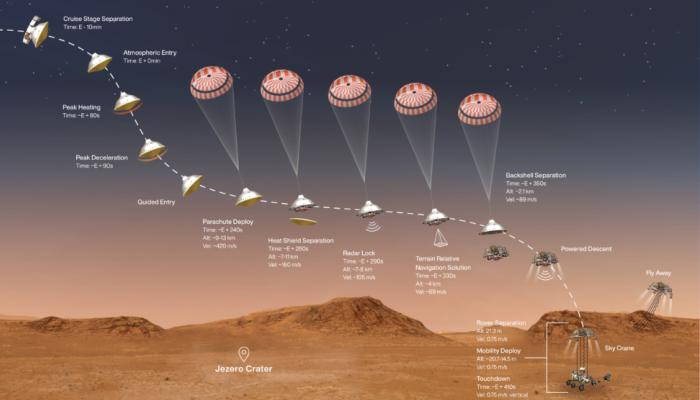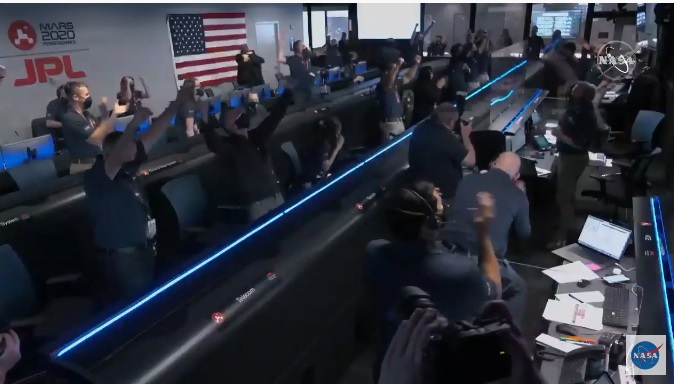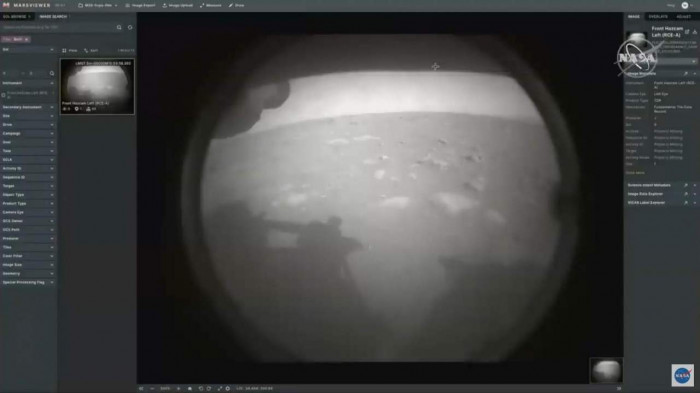NASA Lands Its Perseverance Rover on Mars
 NASA landed a new robotic rover on Mars on Thursday, its most ambitious effort in decades to directly study whether there was ever life on the red planet. While the agency has landed other missions on Mars, the $2.7 billion robotic explorer named Perseverance carries a sophisticated set of scientific tools that will bring advanced capabilities to the search for life beyond our planet. Perseverance was the third robotic visitor from Earth to arrive at the red planet this month. Last week, two other spacecraft, Hope from the United Arab Emirates and Tianwen-1 from China, entered orbit around Mars. But NASA’s spacecraft did not go into orbit first. Instead it zipped along a direct path to the surface. At 3:48 p.m. Eastern time, controllers at the mission operations center at NASA’s Jet Propulsion Laboratory near Pasadena, Calif., received word from Perseverance that it had entered the top of the Martian atmosphere at a speed of more than 12,000 miles per hour. The spacecraft was beginning the landing maneuvers that would bring it to a soft stop in just seven anxiety-drenched minutes. All that anyone on Earth could do was watch and hope that Perseverance performed as designed. At Mars, the fate of the rover was already determined. Mars is currently 126 million miles from Earth. Radio signals, traveling at the speed of light, take more than 11 minutes to travel from there to here. That means that when the message announcing the start of the landing sequence reached Earth, the rover had already been on Mars for four minutes. The only uncertainty was whether it was safe there in one piece, or crashed into many pieces, another human-made crater on the surface of Mars The atmosphere of NASA’s operations center — more sparsely filled than previous Mars landings because of precautions required by the coronavirus pandemic — was pensively quiet. There were periodic announcements of the spacecraft’s progress through the atmosphere: the deceleration and heating as it sliced through the thin Martian air, the deployment of a huge parachute even as it was still supersonic in speed, the shedding of the rover’s heat shield so that its cameras could navigate to its destination, the firing of rocket engines to further slow its descent. In the final step, the rover was lowered at the end of a cable beneath a rocket-powered jetpack until it touched the surface. At 3:55 p.m. cheers erupted in the control room as a member of the mission control announced that Perseverance was intact on the surface. Why is landing on Mars so difficult? In a nutshell, Perseverance had to decelerate from more than 12,000 miles per hour to a full stop during what NASA calls “seven minutes of terror,” for the period of time from the rover’s entry into the atmosphere until its landing. There was no chance for a do-over. The path of Perseverance intersected with the surface of Mars. The only question was whether the rover ended up in one piece, ready to begin its mission, or smashed into many pieces. The thin atmosphere of Mars adds several levels of difficulty. A spacecraft needs a heat shield, because friction from the air molecules heats its bottom side to thousands of degrees. But there is not enough friction to slow it down for a gentle landing with just parachutes.   |

Japan Unveils Human Washing Machine, Now You Can Get Washed Like Laundry (video)
114901.12.2025, 20:45
Chinese humanoid robot sets Guinness World Record with 106-km inter-city walk (video)
81524.11.2025, 16:30
Musk։ Optimus will be able to eliminate poverty and provide everyone with a universal high income (video)
81523.11.2025, 12:45
AGMI researchers expose the hidden role of female perpetrators in the Armenian Genocide (photo)
80013.11.2025, 21:15
LVM3-M5 mission successfully launches CMS-03 satellite (video)
111502.11.2025, 21:17
Google разработала квантовый алгоритм, работающий в 13 тыс. раз быстрее алгоритма суперкомпьютеров
147622.10.2025, 23:44
